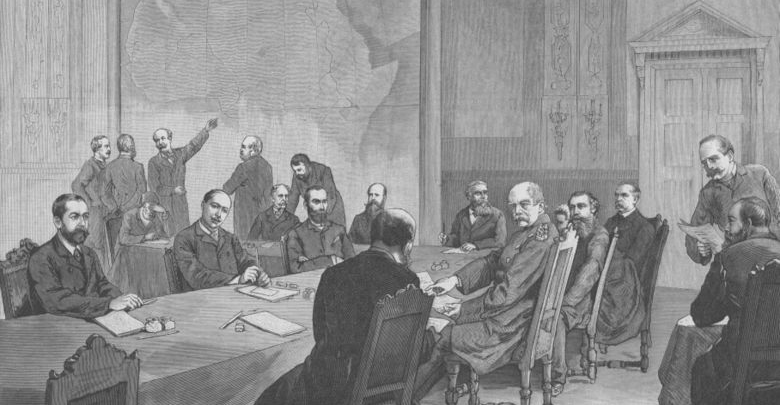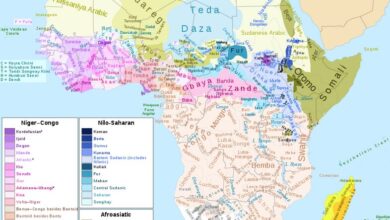What was the Purpose of the Berlin Conference

What was the Purpose of the Berlin Conference?

At the time of the summit, local and traditional authorities still ruled over 80% of Africa. In the end, 50 erratic nations were created in Africa by combining various geometric borders.
A new map of the continent was placed on top of the continent’s original cultures and geographical areas. In the new countries, cohesive groupings of people were split apart and divergent groups that didn’t get along at all were combined without any rhyme or reason.
Why was the Berlin Conference held?
The jealousy of Belgian King Leopold II toward his cousin, Queen Victoria of Great Britain, served as the initial impetus for the Berlin Conference.
Belgian King Leopold II regarded himself as a significant figure. Leopold only held control over the little state of Belgium itself in the 1870s, though.
On the other hand, his relative Queen Victoria possessed an entire empire in addition to being Queen of Great Britain and the Empress of India.
Leopold decided to build himself an empire as a result. He conned many Africans as well as his fellow Europeans in order to do it.
Leopold professed to be a staunch opponent of slavery and a wonderful humanitarian.
He claimed a sizable area in Central Africa, dubbed it the “Congo Free State,” and said that there would be no more slavery there as well as free commerce.
Instead, he started creating a regime that would ruthlessly exploit the local populace for his personal gain.
Also Read: Sub-Saharan Africa: History, Geography, Politics and Racist Undertone
Sub-Saharan Africa: History, Geography, Politics and Racist Undertone
Note
French Equatorial Africa is to the north, while Portuguese Angola is to the south. public sphere
Although Leopold first succeeded in perplexing the majority of Europeans, his fellow kings eventually discovered his ploy.
The area to the north was promptly claimed by French missions. In order to stop Leopold, the British persuaded Portugal, an old ally, to increase its claims to the region to the south, Angola.
As Europeans focused their attention and energies on forcefully subduing African nations in the 1880s, competition for control of the territory around the Congo was only one of several.
They soon started to get into arguments with one another. These possible confrontations threatened Otto von Bismarck, the German chancellor, and his aspirations for Europe.
He called European leaders to Berlin in 1884 to develop a strategy for their growth on the African continent because of this.
The Conference
Between November 15, 1884, and February 26, 1885, the Berlin Conference took place. It led to an action that accomplished three goals.
The first step was to acknowledge the area that King Leopold claimed to be his own domain. The second was to acknowledge some territorial claims that already existed across Africa.
The conference’s third and most significant outcome was the creation of a framework for Europeans to annex and claim land in Africa. In essence, this procedure was to consist of three phases.
European nations would first dispatch explorers. These explorers would get into agreements with local authorities who would consent to European state “protection.”
The pact would then be presented to respective governments before the explorers returned to Europe.
Third, each European nation’s government would negotiate with its neighboring governments to get them to acknowledge that their “protection” actually meant they now possessed that land.
This whole thing was basically a huge hoax, similar to Leopold’s first one. To begin with, many of those accords had little real significance.
The local leaders frequently didn’t understand what they stated because they were typically printed in English or French.
Even chiefs who lacked the necessary power or authority to sign the treaties were occasionally persuaded to do so by the explorers.
Finally, the entire project was founded on the prejudiced notion that indigenous cultures could not just rule themselves since all of this territory was “unclaimed.”
Also Read: Ancient Civilizations of Africa and African Empire
Countries that attended the Berlin Conference
The meeting began in Berlin on November 15, 1884, with fourteen nations being represented by a large number of diplomats.
Austria-Hungary, Belgium, Denmark, France, Germany, Great Britain, Italy, the Netherlands, Portugal, Russia, Spain, Sweden-Norway (united from 1814 to 1905), Turkey, and the United States of America were among the nations represented at the time. France, Germany, Great Britain, and Portugal, four of the 14 participants at the meeting, presided over the majority of colonial Africa at the time.
Berlin Conference Tasks
The conference’s primary aim was to decide that the mouths and basins of the Congo and Niger rivers would be regarded as neutral and open to commerce.
Despite being neutral, a portion of the Congo Basin was turned into King Leopold II of Belgium’s personal realm. More than half of the inhabitants of the area perished during his control.
Only the coasts of Africa were conquered by European powers at the time of the summit. The colonial powers of Europe competed for control of the continent’s interior during the Berlin Conference.
Colonial powers wrangled over geographic borders in the interior of the continent throughout the three-month conference, which ran until February 26, 1885, neglecting the cultural and linguistic borders already in place among the native African people.
The discussion continued after the conference. The conference attendees had completely partitioned Africa among themselves into 50 countries by the year 1914.
Significant colonial possessions were:
Through its rule of Egypt, Sudan (Anglo-Egyptian Sudan), Uganda, Kenya (British East Africa), South Africa, and Zambia, Zimbabwe (Rhodesia), and Botswana, Great Britain came dangerously close to achieving its goal of a Cape to Cairo collection of colonies.
Additionally, the British ruled over Ghana and Nigeria (Gold Coast).
From Mauritania to Chad (French West Africa), as well as Gabon and the Republic of Congo, France seized a large portion of western Africa (French Equatorial Africa).
The Democratic Republic of Congo was under Belgian and King Leopold II rule (Belgian Congo).
Mozambique in the east and Angola in the west were taken by Portugal.
Italian Somaliland, often known as Somalia, and a section of Ethiopia comprised Italy’s possessions.
Namibia (German Southwest Africa) and Tanzania were taken by Germany (German East Africa).
The smallest territory claimed by Spain was Equatorial Guinea (Rio Muni).





